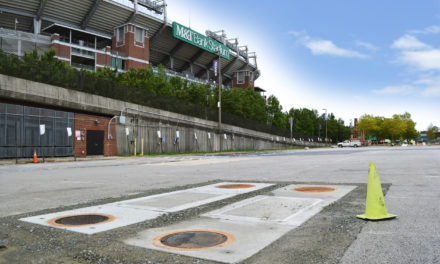On Oct. 5, Detroit Future City (DFC) announced the release of a field guide for transforming vacant lots into assets. The guide offers step-by-step instructions and resources to transform vacant land into a variety of landscapes. This actionable tool is designed to improve neighborhoods by enhancing their physical appearance, contributing to more resilient natural infrastructure, and stimulating job growth and economic opportunity.
DFC Implementation Office developed the “Field Guide to Working with Lots” through extensive input from community partners and stakeholders. “Because of this dedicated engagement process, the field guide provides comprehensive details that address and complement unique, neighborhood characteristics across the city,” said Andrea Perkins, community planner and engagement specialist for Black Family Development.
The guide includes tips on collaborating and connecting with community partners, planning resources, and 34 lot designs.
The field guide is “a critical extension to the contributions the office has made to other major green infrastructure efforts, including helping the City of Detroit secure $9 million in federal funding and providing technical assistance for the Great Lakes Restoration Initiative,” said George Swan, DFC executive committee chair.
DFC has already cataloged nearly 30 implementation projects that will use the guide and lot designs by the end of the fall planting season. DFC will provide insight and support to those implementing designs, and it will offer a mini-grant process funded by the Erb Family Foundation, which also funded development of the guide.
On Sept. 29, the Philadelphia Water Department (PWD) broke ground on its first official vacant lot site as part of its Green City, Clean Waters program. The Heston Lot and Baker Playground sites will both incorporate rain gardens and subsurface stormwater storage trenches. Together, the two sites will provide Philadelphia with an additional greened hectare (2.27 greened acres) and will manage 143,142 L (37,814 gal) of runoff. The project will not only manage stormwater but also improve Philadelphia neighborhoods and help the PWD forge community partnerships. “If we can work with partners to tackle the challenges of vacant lots through Green City, Clean Waters, we’re effectively delivering a one-two punch that knocks out blighted areas and turns them into valuable community green spaces that also help improve our rivers and streams,” wrote PWD in a blog post.




